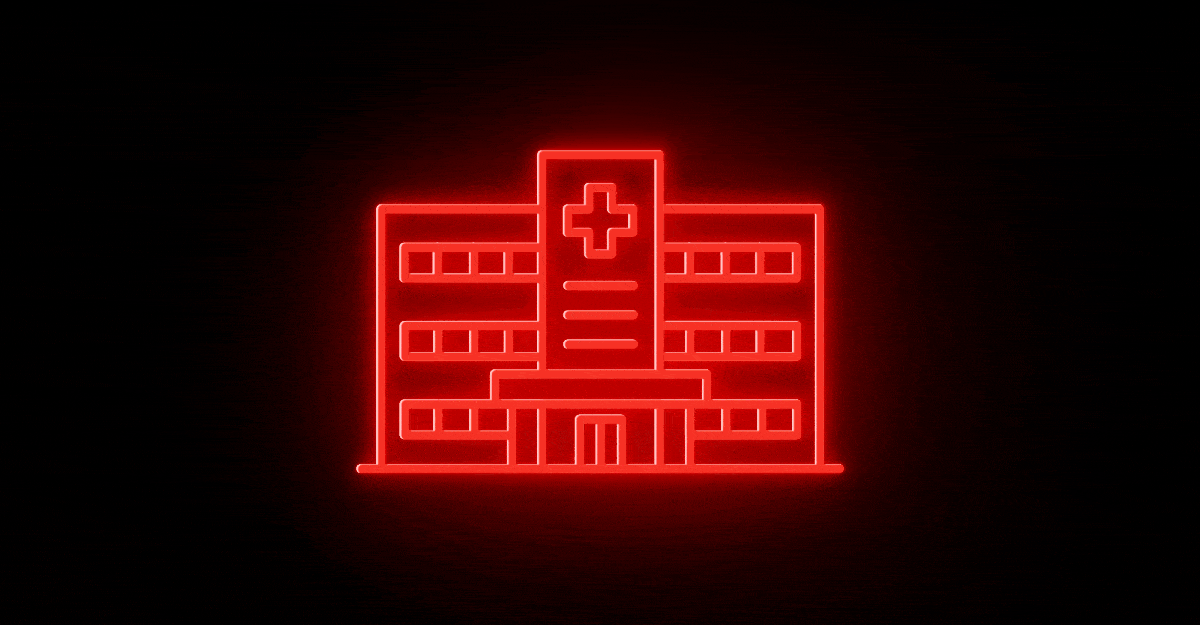If you have a heart attack in the United States, you might assume that an ambulance will bring you to an ER and its staff will take care of you. But hospital closures over the past 20 years and physician shortages were undermining that assumption even before President Donald Trump signed his “One Big Beautiful Bill” into law. Now that legislation—which will cut Medicaid spending by an estimated $1 trillion over 10 years, puts the entire emergency-medicine safety net at risk. The destabilizing effects will be felt not only by those who lose access to Medicaid, but also by those who have private health insurance.
As an ER doctor in New York City, I am terrified about the coming cuts. A recent study from the Rand Corporation confirms that ERs across the entire country are dangerously overstretched and underfunded. About a fifth of emergency visits each year are never paid for, amounting to nearly $5.9 billion in care costs absorbed by hospitals. The uninsured and underinsured were already more likely to have to seek treatment in the ER when they fell ill. With the changes to Medicaid eligibility, their ranks are set to swell.
Medicaid provides coverage to more than 71 million Americans; in addition, the Children’s Health Insurance Program (which provides low-cost coverage for children of families that do not qualify for Medicaid) covers 7 million children. Trump’s legislation is expected to deprive some 12 million people of Medicaid by 2034, and an additional 5 million will lose insurance because of changes to provisions of the Affordable Care Act. The cost of replacing this lost coverage for 17 million Americans will be especially daunting for low-income families: On average, health-insurance premiums add up to nearly $9,000 a year%20%5BFigure%201.3%5D.), whereas a full-time minimum-wage job generates just$15,000.
I went into frontline medicine to help people, not to bankrupt them—yet I am acutely aware that medical debt is a major factor in nearly three-fifths of bankruptcy cases in the United States. When someone who does not have insurance comes into the ER, I am forced to discuss with the patient what necessary care they may have to delay or forgo if they cannot afford it. These conversations will become only more frequent when millions of people are kicked off their health insurance.
[Jonathan Chait: The cynical Republican plan to cut Medicaid]
The 1986 Emergency Medical Treatment and Labor Act, one of the most important public-health measures ever enacted in the United States, mandates that every emergency department must provide treatment to anyone who comes through the door, regardless of their ability to pay or their insurance status. “People have access to health care in America,” President George W. Bush once declared. “After all, you just go to an emergency room.” But the treatment mandate is unfunded. Bush neglected to say that patients are still charged for that visit once they receive the care they need. When they can’t pay, they get hounded by a collection agency. If they still can’t pay, the hospital ends up eating the cost. The downstream effect is lower staffing and fewer services. The burden of uncompensated emergency care unquestionably contributes to hospital closures.
Even before Trump’s huge budget-reconciliation bill passed, many people living in rural communities were at risk of losing access to health care. Of 25 hospitals that closed last year, 10 were in rural America, the industry publication Becker’s Hospital Review reported; according to a nonpartisan health-policy center, another 700 rural hospitals are financially distressed and at risk of closure. Nearly half of all children and one in five adults in small towns and country areas rely on Medicaid or CHIP; half of all births in these communities are financed by Medicaid. This makes rural hospitals highly dependent on the reimbursement that they receive from Medicaid for treating those patients.
The more patients who lose coverage, the greater the threat to these institutions. A report from the National Rural Health Association and the research firm Manatt Health finds that, because of Trump’s BBB, rural hospitals “will lose 21 cents out of every dollar” they’d previously received in Medicaid funding. The inevitable result will be more service cuts and more hospital closures, which will endanger everyone in these areas—even people with insurance.
The rational course would be for the government to put more resources into Medicaid, so that patients in need could access care in an optimal setting, instead of visiting the ER, where treatment is more expensive to provide and less comprehensive. Supporters of the BBB purport to have data showing that patients with Medicaid misuse the ER by seeking unnecessary treatment, and they argue that visit volume will go down once they are uninsured. My own experience is that although uninsured patients see me less, they typically show up much sicker—and need more resource-intensive care.
One of my regular patients has both Crohn’s disease and a debilitating psychiatric condition. He has no family support, usually lives in a shelter, and only sometimes has a job. After requiring an emergency intestinal surgery last year, he now comes into the ER every few days to have his ostomy bag changed, because the only clinic that takes Medicaid is in another borough. In an ideal world, he would have access to a clinic with wound-care nursing and social support. In this far-from-ideal world, taking away his Medicaid will not stop him from having chronic disease.
This patient could try to skip visits, but he will have to come to the ER when he gets an infection or his illness flares again, and then he will also be stuck with a bill that will hurt his credit rating and set back his efforts to pull himself out of poverty. The hospital, too, will be worse off—forced to absorb the cost of his treatment when previously it did receive at least small payments for his visits. In short, any appearance of less demand on health-care resources is a mirage; the real outcome will be worse health for the patient and higher costs for his health-care providers.
Imagine various such scenarios replicated all across the country, when millions of people lose Medicaid coverage. In a letter to Senate leadership last month, the American Medical Association’s chief executive, James Madara, warned that the proposed law “could lead to delays in treatment, increases in emergency room visits and hospitalizations, and other expensive forms of care.” His appeal went unheeded, as Congress passed the legislation on largely party-line votes. As Alison Haddock, the president of the American College of Emergency Physicians, put it: “The very idea of emergency medicine as we now know it—lifesaving care available for anyone at any time—is under direct threat.”
The threat is dire, but a stay is still possible. The majority of health-care cuts in the act will not go into effect until after the midterm elections in November 2026. Lawmakers have at least a theoretical opportunity to change course and save our emergency-medical system—if enough voters make them pay attention.
From The Atlantic via this RSS feed


